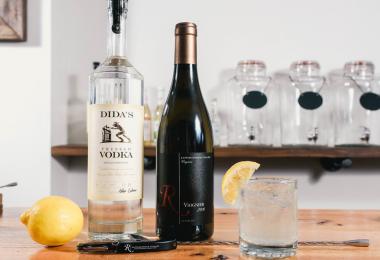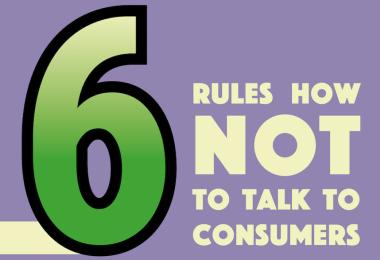The brick building in Hamburg is modern, with clean lines and plenty of windows – the kind of place that would house a tech company. It’s home to HAWESKO, the online retail arm of the Hawesko Group, one of the biggest wine merchants in the world.
“We moved to this new office in August 2017,” says marketing manager Alex Kim. “Before that, our office was located in Tornesch,” a small town 25km north of Hamburg. The move to the city has had a major impact on the business, he says, bringing in an influx of young and digital-savvy employees.
The timing couldn’t be better, because HAWESKO is gearing up for the next digital challenge: to stay at the top of Google rankings.
Customer-focused marketing
“The company was started by my father in the basement of a two-bedroom apartment in the heart of Hamburg,” former CEO Alexander Margaritoff told Meininger’s back in 2008. After World War II, Peter Margaritoff became Germany’s biggest manufacturer of women’s stockings. “Unfortunately, he went bust and started Hawesko in 1964.”
It began as a mail order business for spirits but started selling wines in the 1970s. Over time, the charismatic Alexander, who died in 2016, turned it into Germany’s biggest wine business, a publicly listed company. “It was really important for Alexander Margaritoff to build a customer base,” says Kim. “He knew that a strong customer is really worth a lot in the wine business, because you have a high repurchase rate of wine.”
Margaritoff was one of the first to launch a web shop in Germany, in 1996. He called it Winegate because “if it failed, there was no connection to Hawesko,” says Kim. “There was no proven case that you could do a successful e-commerce business.” But the online shop became so successful, it was renamed HAWESKO in the early 2000s.
Margaritoff lost control of Hawesko in 2015 after a hostile takeover bid from fashion entrepreneur Detlev Meyer, and resigned. Today, the Hawesko Group includes HAWESKO, the number one online wine retailer in Germany, plus Jacques’ Wein-Depot; with 285 outlets, it’s Germany’s biggest specialist wine retailer. Wein Wolf, CWD Champagner and Wein-Distributiongesellschaft are wine wholesalers, and there are some smaller online businesses, including Vinos.de, which sells Spanish wines. Last year, the Hawesko Group’s 18 brands made €524.3m, of which €98.8m came from online sales. It also acquired Austria’s WEIN & CO, a company whose bars and stores are a cultural institution.
Kim opens a door to reveal people sat quietly at their desks. “This is The Wine Company, that concentrates on Sweden,” he says. While Sweden is a monopoly market, Swedes can order from overseas wine companies, and get a better price. Hamburg, being geographically close to Scandinavia, is perfectly placed to supply them. (Carl Tesdorpf, Hawesko’s online fine wine business, began as a wine store in Lübeck in 1678, and once supplied the royal courts of Scandinavia and the tsar’s court in St Petersburg.)
Next Kim introduces WirWinzer, acquired three years ago. “It translates to something like ‘We the Wineries’ and the idea is to connect the wineries with the end consumer,” he explains. WirWinzer is a platform where more than 900 German wineries list about 20,000 wines. “The marketplace model is really something we can scale infinitely,” says Kim.
One issue with online selling, faced even by the mighty Amazon, is that wineries struggle to upload the necessary pictures and information. Kim nods. “It’s really a problem,” he says, explaining that the company has two employees who do nothing but sort out the PDFs and files sent in by wineries. But things will get better, because the rising generation of winegrowers is tech savvy and understands the need to communicate.
Then it’s on to the marketing and e-commerce offices. HAWESKO takes an omni-channel marketing approach, producing direct mail, an e-newsletter that goes to 200,000 customers, and a hefty catalogue sent to as many as 400,000 customers twice a year. The marketing team launches specific campaigns, and screens on the wall show when and how consumers react. If too few customers open the newsletters and buy, the offer may be tweaked and sent out in a second newsletter. The more the customer interacts with the system, the more targeted and timely the newsletters become.
“This is very personalised marketing,” says Kim.
The German market
In the boardroom, Kim opens PowerPoint. “Let’s start with the overall premium market in Germany,” he says, defining premium as wines priced above five euros a bottle. The total market is worth €7 billion ($7.7bn), of which about €2bn is premium. The online trade accounts for €400m of premium sales, and is seeing double-digit growth rates, year-on-year. But those online sales, which Kim expects to double in five years, are cannibalising offline sales.
Now there’s a race on to dominate the online wine market. At the moment, HAWESKO, whose portfolio is full of well-known names such as Antinori, Frescobaldi and DBR Lafite, is number one. But new online players have entered the market, backed by private equity, which are not under pressure to earn money in the short term – which means they can engage in price wars. “After five years, they are sold to other investors, so the operating profit is not important for them,” says Kim.
They are not the real challenge, however.
A new digital wave
“The centre of the challenge is not the technical requirements,” says Kim, saying HAWESKO understands home pages, mobile optimisation, website management, apps and newsletters. The big change that’s coming is to the business model. In the past, a company like HAWESKO would have about 500 SKUs in its catalogues and web stores. “We were the ones who talked to our customers, to tell them what to buy.” It was push marketing, where HAWESKO recommended wines. “With the online channel, this business model is completely turning around, because nowadays the consumer is looking for wine.”
But consumers still don’t know a lot about wine, so they put “red wine” into Google. Because Google prioritises sites with a wealth of high-quality content, it will show the consumer the site offering the most red wine information. In order to get to the top of the Google ranking, a company needs to have a wide variety of red wines available.
“The structure of the inventory changes,” says Kim. Instead of offering around 500 wines and storing 50,000 bottles per SKU, HAWESKO now offers around 4,000 wines and holds an average of 10,000 bottles per SKU.
But inventory alone won’t win the Google race, because Google searches for quality content – it wants more than a bottle shot and price listing. The way to rise high is to have both a wide range and in-depth content.
Google also offers price transparency, so there is no chance of getting consumers to pay more for a wine if they can find it cheaper elsewhere. This makes private label and own brands even more important for online retailers, so they can keep their margins intact. HAWESKO currently has about 200 private labels and own brands, representing 40% of its sales.
The changing wine lover
Google has been a major force for years – so why is this such a burning issue right now? The first reason is because of new market entrants. But the consumer is also changing. Premium wine buyers tend to be in their mid-50s and above; older, wealthier, male. Now the first members of Generation X have turned 50, moving them into the prime wine-buying category – and they’re different from Baby Boomers. For a start, they prefer the light, fresh wines of Italy and Germany, leaving classic Bordeaux behind. And they are online buyers, says Kim. “Being prepared for them is like preparing for the digital challenge. It’s the same. You have two different trends that are really aiming at the same challenge.”
Since the online battle will be won by understanding Google, HAWESKO now hires search engine experts to work closely with the wine team.
There are other issues as well. One is that people are living in smaller homes than they used to and have no room for a wine collection. Kim says the average dwelling space in German cities has decreased by more than 20%. “This is reflected in the buying behaviour of our customers,” who are no longer buying 36 bottles at a time – but who can be persuaded to buy smaller amounts more often.
Another challenge is climate change. Sales fell unexpectedly in 2018 because the summer was so long and so hot. “It’s crucial for us that we have strong business in May and September,” says Kim, because those are the months when customers switch from red to white and vice versa. Because the weather stayed warm for so long, the major red wine orders never came – and red wine generally attracts a higher margin. “We have prepared our business for more flexibility,” says Kim. Now, if September temperatures stay high, the team has an alternative marketing campaign ready.
It’s all about the wine
After the presentation, there is a visit to the vast fulfilment warehouse at Tornesch, where Marc Kohnke shows Meininger’s around. There are so many wine boxes stacked into towers, at such length and breadth, that the storage area looks like a city of wine. The warehouse vibe is relaxed, and Kohnke says many of the staff members who are standing at packing stations fulfilling orders have been with the company for years. The most fun part of the warehouse is the cage where the most valuable wines are kept – Opus One, Vérité, Lafite, Petrus. It’s a wine lover’s dream.
One thing is clear – the well-financed start-ups have a fight on their hands. The promise of digital is that anybody can launch an online business and tackle the giants, but it’s not true. HAWESKO has the brands, the longstanding relationships, the depth of inventory and the logistics capacity to stay at the top of the Google rankings.
And Google, for better or for worse, will soon rule the wine market.
Felicity Carter
This article first appeared in Issue 5, 2019 of Meininger's Wine Business International magazine, available in print or online by subscription.
You can also sign up to our free newsletter








